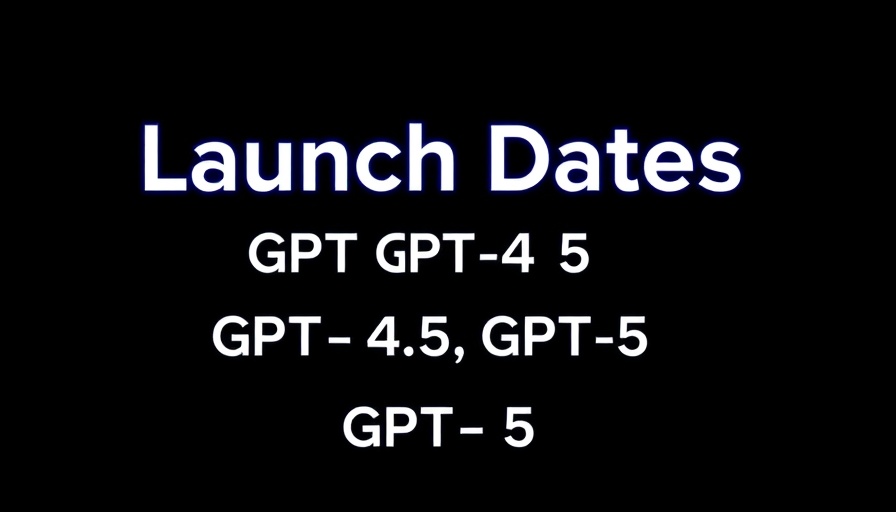
OpenAI Sets the Stage: Major AI Developments are Coming
OpenAI is gearing up for an exciting period of innovation with the imminent launches of GPT-4.5 and GPT-5. With an impressive rise in user engagement—400 million weekly active users and 2 million enterprise customers—the tech giant has demonstrated that claims of diminished interest in ChatGPT were premature. The upcoming releases promise transformative impacts on how businesses leverage AI for marketing and operational efficiencies.
What to Expect from GPT-4.5 and GPT-5?
GPT-4.5, codenamed “Orion,” is set to launch in the coming days. While some speculate this will not represent a significant leap in capabilities, experts suggest it will lay the groundwork for the highly anticipated GPT-5, slated for late May release. Sam Altman, CEO of OpenAI, hinted that GPT-5 will unify the company’s reasoning models with existing GPT frameworks, potentially leading to a more advanced level of AI reasoning and problem-solving capabilities.
The Evolution of OpenAI's Model Framework
Understanding OpenAI’s model classification is crucial. The company has delineated five distinct levels of AI capabilities, from basic chatbots (Level 1) to sophisticated organizations capable of handling enterprise operations (Level 5). Currently, we have functioning chatbots and reasoners, and the upcoming releases aim to integrate these models into a cohesive, user-friendly platform. This shift could significantly enhance user experience by reducing complexity in AI interactions.
The Competitive Landscape: Staying Ahead
With competitors like xAI releasing advanced models and Anthropic unveiling Claude 3.7, OpenAI faces robust competition. Paul Roetzer, founder of Marketing AI Institute, acknowledges this new landscape as a pivotal moment for AI technologies, highlighting the rapidly converging capabilities of various AI offerings. In this climate, business leaders must be judicious in their exploration of AI tools, focusing on quality and integration rather than constantly chasing the latest model.
Why Marketing Executives Should Care
For C-suite leaders in competitive industries, understanding the evolution of AI models like GPT-4.5 and GPT-5 is paramount. These advancements will directly influence how marketing strategies are executed, driven by improved AI capabilities. The time to assess your AI tools, processes, and integration strategies is now. By diving into these discussions, executives can better prepare their organizations to capitalize on the efficiencies and innovations brought by the new AI landscapes.
Actionable Insights for Leaders
As the release dates of GPT-4.5 and GPT-5 approach, marketing executives are encouraged to focus on building solid expertise around one robust AI model rather than attempting to utilize every new release. As Paul Roetzer advises, select an existing model that meets your needs and delve deeply into its functionalities. This strategic focus will allow your organization to fully harness the capabilities of AI innovations and ensure sustained marketing success.
In conclusion, the upcoming launches of GPT-4.5 and GPT-5 signal a pivotal turning point for AI in marketing. By committing to these advancements and adjusting strategies accordingly, leaders can position their organizations for future success. Embrace this moment—consider engaging with AI systems that are set to transform how businesses operate.
 Add Row
Add Row  Add
Add 


Write A Comment